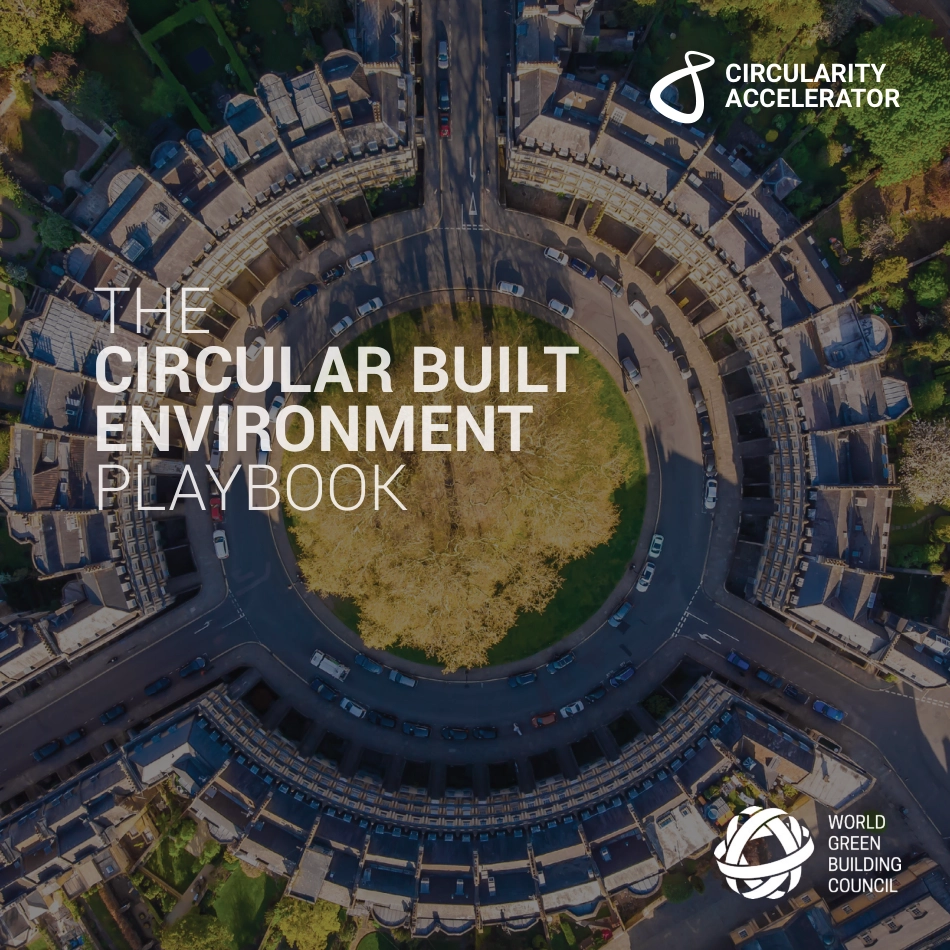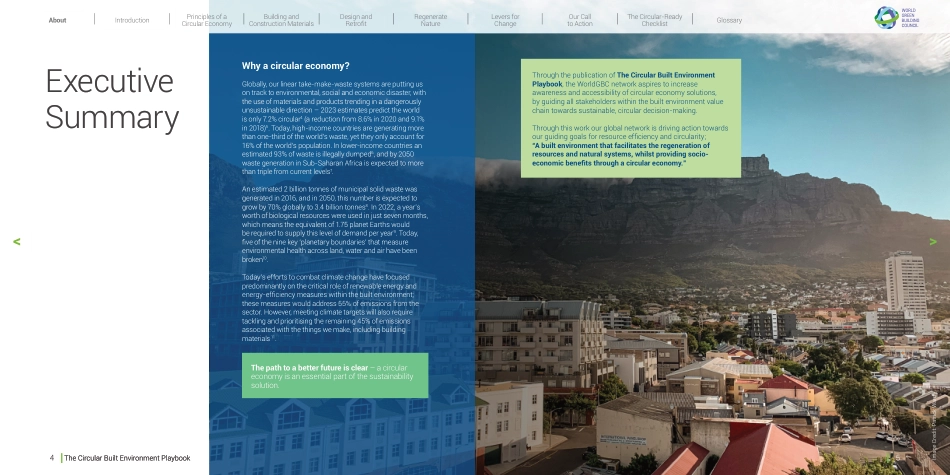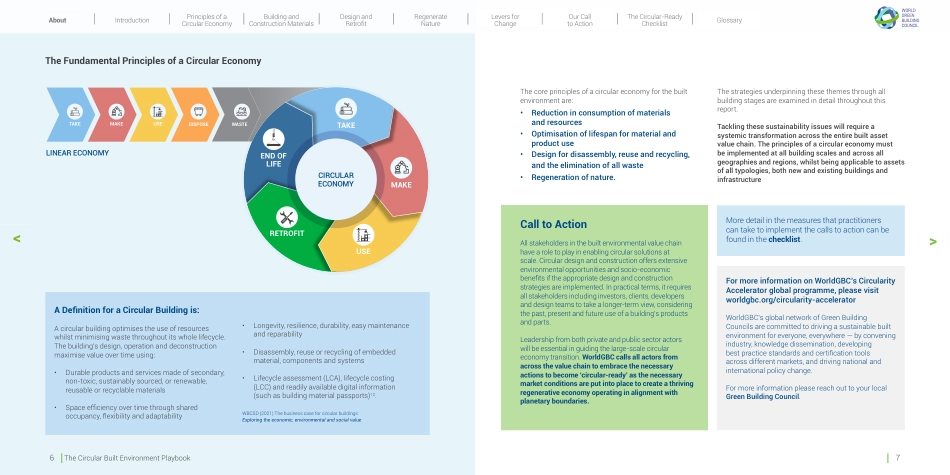THE CIRCULAR BUILT ENVIRONMENT PLAYBOOKCIRCULARITY ACCELERATORExecutive SummaryWhy a circular economy?Globally, our linear take-make-waste systems are putting us on track to environmental, social and economic disaster, with the use of materials and products trending in a dangerously unsustainable direction – 2023 estimates predict the world is only 7.2% circular4 (a reduction from 8.6% in 2020 and 9.1% in 2018)5. Today, high-income countries are generating more than one-third of the world’s waste, yet they only account for 16% of the world’s population. In lower-income countries an estimated 93% of waste is illegally dumped6, and by 2050 waste generation in Sub-Saharan Africa is expected to more than triple from current levels7. An estimated 2 billion tonnes of municipal solid waste was generated in 2016, and in 2050, this number is expected to grow by 70% globally to 3.4 billion tonnes8. In 2022, a year’s worth of biological resources were used in just seven months, which means the equivalent of 1.75 planet Earths would be required to supply this level of demand per year9. Today, five of the nine key ‘planetary boundaries’ that measure environmental health across land, water and air have been broken10. Today’s efforts to combat climate change have focused predominantly on the critical role of renewable energy and energy-efficiency measures within the built environment; these measures would address 55% of emissions from the sector. However, meeting climate targets will also require tackling and prioritising the remaining 45% of emissions associated with the things we make, including building materials.11. Through the publication of The Circular Built Environment Playbook, the WorldGBC network aspires ...



